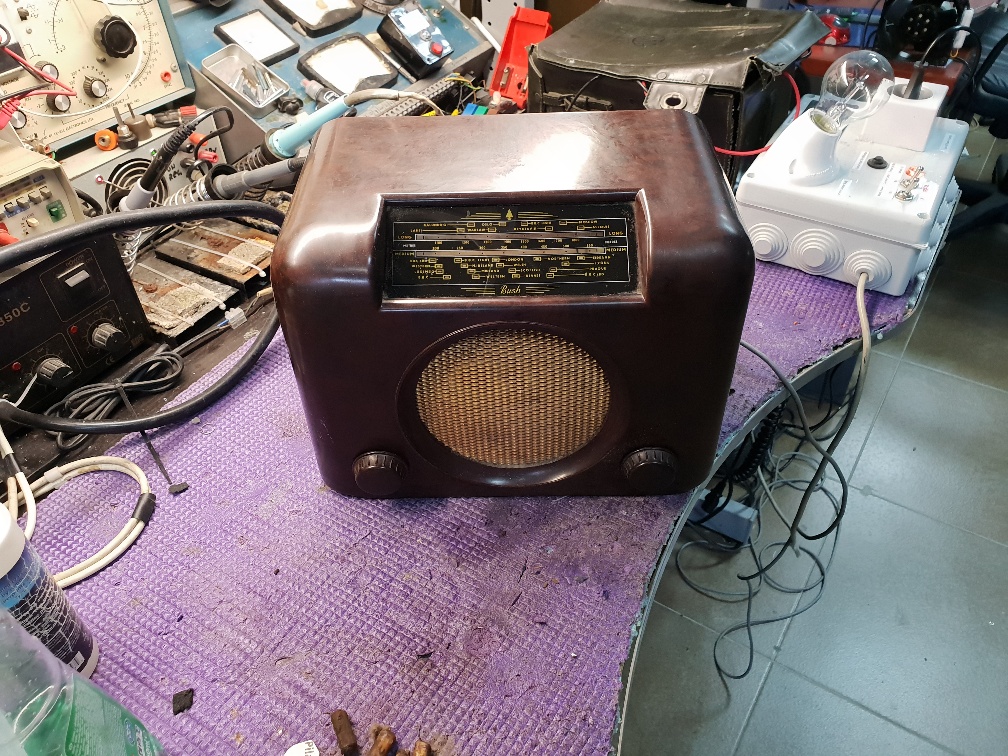
Another Bush DAC90A, I will not die!
A warm spring day, the peace only shattered by the continuing road works, new drains being fitted and multiple shootings over drug boundaries. Just another day in the office.
A client brought this set in, wanting it to be repaired. Well, we all know what that means. I suggested, restored as I will not just do the bare minimum to get a nice set going. So, as the set had been in the family since it was born, I proceeded to do a full electrical sort out!
The set looked to be original, with no apprentice marks, so that was good. Out with the chassis, disconnected the loudspeaker so it could be worked on. 70 years of dust and muck dispatched to the countryside outside the office. A quick look around and powered up slowly with the current limiter. 20 odd angry pixies being demanded from the mains supply, so at least the heaters were in tact.
Oh well, chop out all the Hunts wax capdensorators, loads of 0.05uFs and 0.01s etc… The smoothing block seemed as good as usual. Cleaned all the valve bases and controls and powered up, expecting a great sound, followed by a trip down to the bar and celebration….No.
Waving a nice AM signal around the built in antenna produced a very small output. The UL41 output valve had suffered at the hands of the “Bias Buggerers”, a leaking coupling capdensor. So, a replacement fitted. Still little happening. Had to resort to the oscilloscopiograhical display machine. The local oscillator was not local, miles away. The UCH41 oscillator and frequency changer valve was dead. So, a healthy replacement donor valve fitted (with written consent of course). Then, found the remains of an insect sat across one of the trimmers on the rear of the chassis. I check with David Attenborough who agreed that this insect was the wrong value for this chassis. Once removed, we had joy of joy musical content.
Now to replace all the rotten rubber cables, clean the dial lights etc. These were very dim. They are small MES bulbs and driven as part of the series heater chain and HT set up, direct from the mains. The set was drawing around 30 Watts which I think is a little low I think. The HT was a bit low, probably suggesting the UY41 rectifier was tired. So, one day I will replace it, but given the sound this baby was making… leave as is. With the set reassembled and the case cleaned, it was a fine example of a 70 year old set, with 90% of it’s original makings.
I made a little mod that the customer fancied. Even when these sets are in good health, the dial lights are always quite dim. They are fed in a shunt fashion from the series heater circuit. After 70 years sat in a heavy smokers house, the celluloid filter behind the dial glass absorbs most of the photons emitted by the two little dial lights, requiring a Hubble telescope to determine where you are tuning.
So, here is the mod I do. Obviously with the dial assembly cleaned up, I fit a bridge rectifier to each end of the two series wired dial lamps. On the output of the rectifier, fit a capacitor, say 1000 uF 16V. You get about 9-13 Volts DC depending on how much current the set is drawing from the mains. I use a couple of high brightness white LEDs, RS do bags of them for peanuts. Wire these in series with a suitable current limiting resistor. Depending on the voltage, about 270 Ohms gives plenty of brightness. The rectifier, capacitor and resistor can all be fitted into some heat shrink and secured under the chassis. With the LEDs heat shrinked so nothing touches the chassis, I angle them at the ends of the turning scale, behind the celluloid diffuser and glue them in place. I aim pointing to them at the rear of the angled tuning dial chassis so the light up the whole area. You can leave the original dial lights in place to give a bit of warmth. When on, the dial looks nice an clear, not overly bright, but quite smart. The nice childish thing that appeals to me is that when you switch off, the LEDs take a second or so to dim out due to the reserve of angry pixies held in the 1000 uF capacitor. As a purist, I would not normally mess with dial lights, but I think this looks nice!



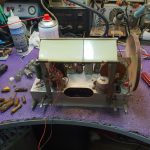
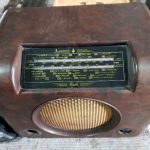



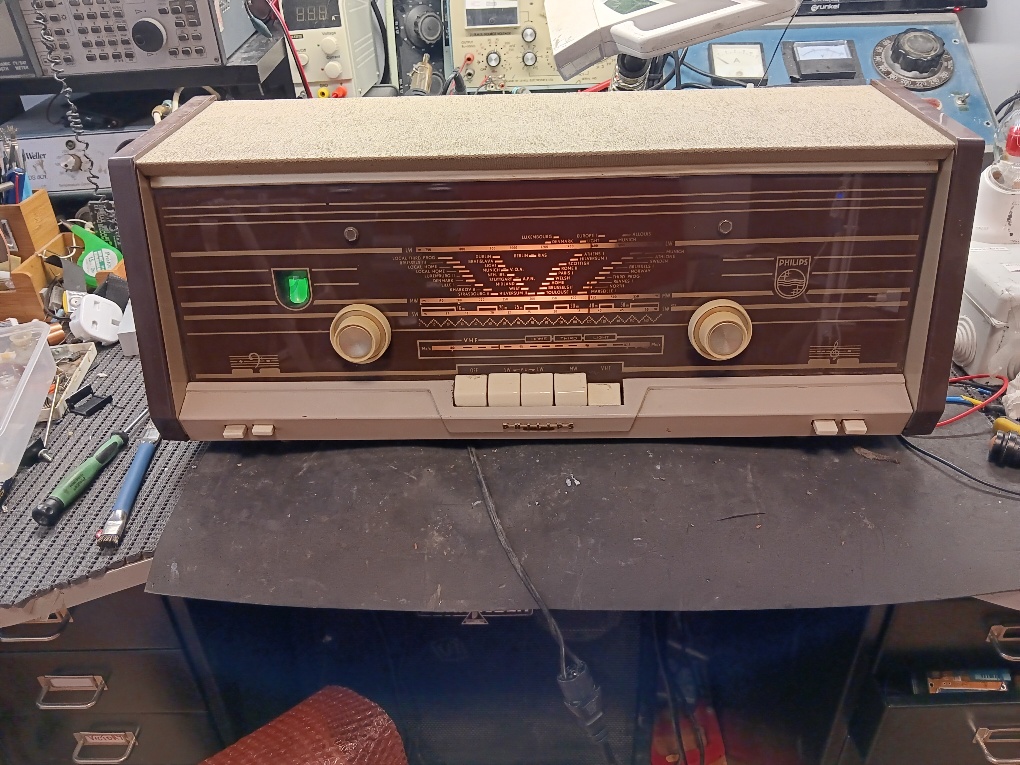
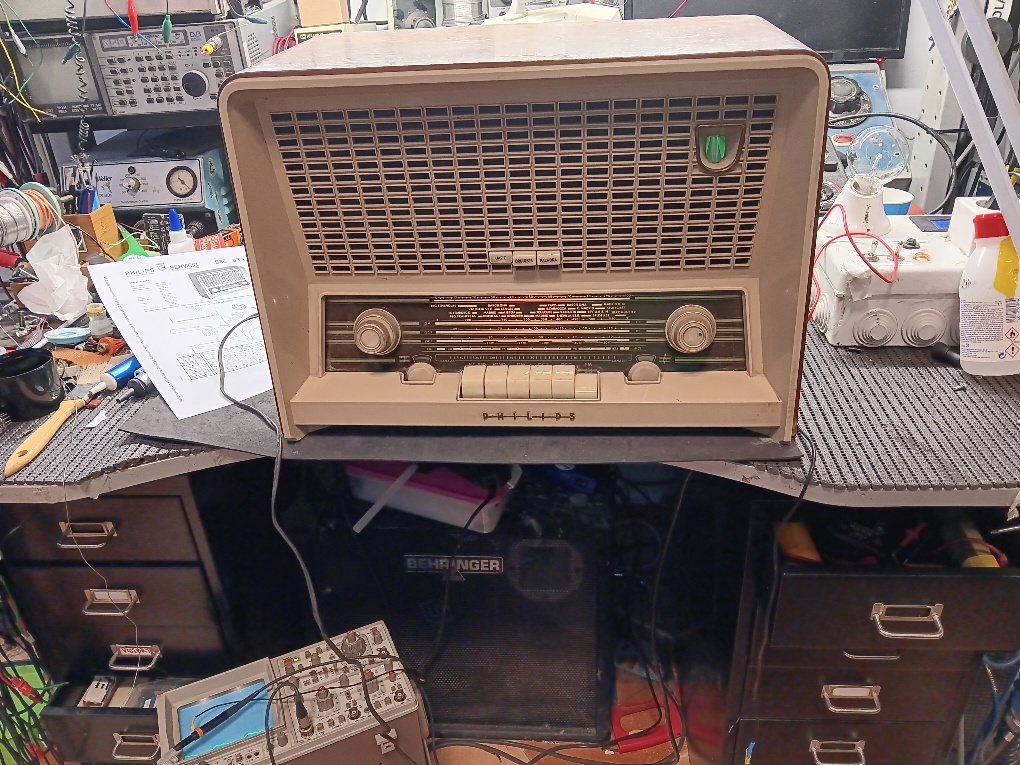
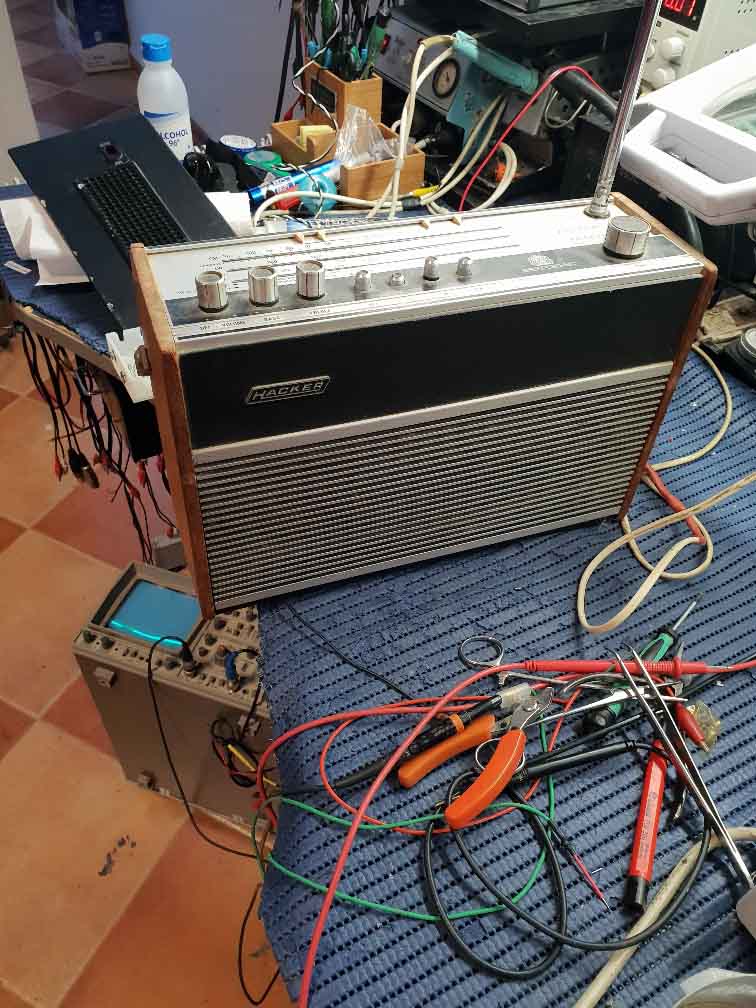
Have you done the mods that give the audio a less muffled sound?
Hi
Yes, always make a couple of small mods to make them sound a little less BBC Home Service. I reduce the value of the the caps C17 and C19. This makes the set sound quite HiFi, whilst retaining the natural warm sound. Let me know if you need a diagram.